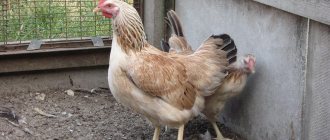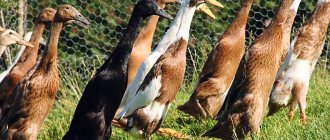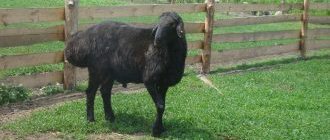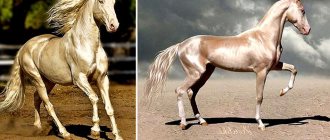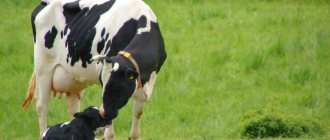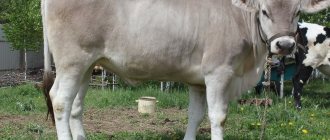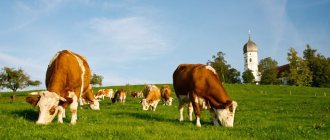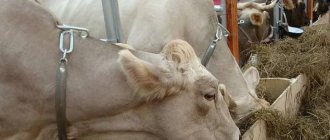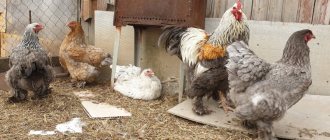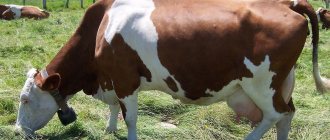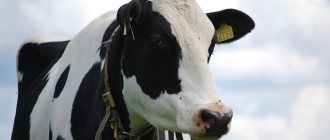Currently, there are several thousand breeds of cows. Ayrshire is one of the most popular in our country. Such a high demand is explained by the high-quality milk and meat productivity of animals. The Ayrshire breed is unpretentious in care, which, coupled with good health, makes representatives of this color indispensable animals on the farm.
Ayrshire cow
History of origin, popularity and prevalence
The homeland of the Ayrshire cow breed is County Ayr, located in the south of Scotland. The resulting color is the result of crossing Dutch, Alderney, Teeswater and Scottish breeds. The organization of the first breeding farm occurred at the beginning of the 19th century. Subsequently, Ayrshires spread to Australia, Canada, many countries of Central Europe and the American continent, which is largely due to the good adaptability of cows to various unfavorable climatic conditions.
Appearance of Ayrshire cattle
Ayrshire cow sales locations
You can buy the Ayrshire breed from private farmers and on large and small farms. Several contacts are offered for making a good deal:
- Victor, Moscow, tel.;
- Daria, Moscow region, Sergiev Posad, tel. +7 915 275 95 35;
- Irina, Moscow, tel.;
- Alexander, Pskov, tel.;
- Elya, Leningrad region, Lodeynoye Pole, tel. +7 921 981 83 64;
- LLC "Cherepovets breeding enterprise", Vologda, tel. +7;
- GKFH Ilchenkov Yuri Vasilievich, Krasnodar, tel. +7 938 528 44 88;
- Vologdaplemservice LLC, Vologda, tel. +7 921 714 43 34.
Description of the Ayrshire breed
Cows of this color are breeding representatives of cattle, which were distinguished by good immunity and high milk productivity. The description of the Ayrshire cow breed is as follows:
- unpretentiousness to weather conditions;
- acclimatization process harmless to milk yield;
- omnivorous, which eliminates the need to prepare special feed;
- active and flexible character;
- endurance;
- high life expectancy;
- absence of genetic pathologies;
- stable milk yield.
Ayrshire cows
The disadvantages of the breed include timidity and excessive stubbornness; at temperatures above 30 degrees, a deterioration in the general condition is possible.
Pros and cons of horned and polled animals
Polled are cows without horns. The main advantage is their safety in relation to humans and relatives. Fights among females are not uncommon. In the process of “showing things off,” they can pierce the stomach or udder of their rival with their horns. Polled individuals have a calmer character and try to avoid conflicts.
By looking at the horns, you can determine the number of calvings a cow has had, on which peculiar rings appear with each pregnancy. Animals give birth annually, which is why their age can also be determined by their rings. In calves whose age has not yet reached one and a half years, adulthood is determined by the length of the horns. In polled cows, this parameter is recognized by their teeth.
Natalya Alexandrovna, 43 years old:
I first purchased one Ayrshire cow 10 years ago. The cow has taken root well in the herd. The milk surprised me with its excellent quality. In terms of quantity, she was the record holder among all cows, not demanding of feed, and easy to care for. Over time, I replaced all the thrushes. There are now 23 Ayrshires in the herd. Some individuals produce 50 liters of milk per day, fat content 6%. I am proud of my purchase, although it was quite difficult to buy Ayrshires. There are no farms that breed and sell.
Lyubov, 38 years old:
We have one Ayrshire on our farm. We bought her as a calf. Development was rapid; puberty arrived after 14 months. After calving, the young animals were immediately separated from maternal feeding. This threatened the mother with mastitis. The calf drank 1-2 liters of milk, and the cow gave 12 liters. Seraphima (this is the name of Ayrshira) is of large build, white in color with red spots. I am glad that he is not sick, there is enough milk for both the family and for sale. High quality products. We will raise a heifer for our farm.
Ivan Ivanovich, 58 years old:
Our family has always kept cows, but with the advent of the Ayrshire we are experiencing the pleasure of raising them. In the winter I keep the cows in a warm barn; in the summer I am in no hurry to turn them out to pasture. I do this gradually so that the cows do not get rumen swelling. I use mixed feed and vegetables as feed. I make my whole family, grandchildren and neighbors happy with milk.
External characteristics of the Ayrshire breed
The Ayrshire cow has relatively small parameters compared to other breeds:
Color
The most common color is red or brown-white. In this case, the bright shade predominates. The sex of the animal can also be determined by color. For example, heifers always have red and white spots, but Ayrshire bulls can have black spots.
Ayrshire bull
Body type
Typically, the height of cows and bulls of the breed in question does not exceed 125 cm. Other characteristics include:
- short body;
- wide back;
- presence of dewlap on a narrow chest;
- lack of bone mass, which is combined with prominent joints;
- straight and well-formed limbs with large hooves;
- light color of the horns, turned in different directions;
- short hair;
- developed muscles;
- small narrow head size;
- the correct shape of the udder with nipples having a cylindrical or cone shape.
Weight
Weight parameters correspond to the gender of the animals. Thus, the average body weight of heifers is 450-500 kg, bull calves do not weigh less than 800 kg.
Advantages of Scottish beauties
This species is recognized as economically profitable and suitable for breeding new breeds for six reasons:
- good genetic fund;
- adaptation to wet, cold climates;
- minimum care requirements;
- high digestibility of feed;
- disease resistance;
- early maturity (first calving occurs at 2 years).
Ayrshire calves are born weighing about 30 kg. Over the course of a year, their body weight increases 10 times. Having reached the age of 12 months, a bull or heifer already weighs 250-300 kg.
The advantages of the breed include endurance and long lifespan. The owners note that when nutrition deteriorates, its representatives can reduce productive indicators, but when the diet is corrected, they quickly restore them to the previous level.
Productive characteristics of Ayrshires
The annual milk production of Ayrshires in European countries is about 9 thousand liters. In Russia, figures vary between 5-7 thousand liters. Currently, active work is underway aimed at increasing the milk yield of Ayrshire cows. Thus, in the process of breeding production, the method of artificial insemination is additionally used. Breeding material of the Canadian variety of the breed is often exploited. Thanks to the use of the mentioned methods, in some Russian farms the milk yield began to exceed 8 thousand liters per year. At the same time, the quality of milk from Ayrshire cows is always at a high level: fat content is 4.2%, and protein accounts for 3.5%.
The milk fat content of Ayrshire cows is 4.2%
Initially, the Ayrshire breed was bred solely for the purpose of producing milk, but not meat. However, the weight of individual males can exceed tons kg. In this case, the meat yield does not exceed 50%.
Productivity
The average cow produces 7000-8000 kg of milk per lactation, but individuals are also known to produce up to 11000-12000 kg. Cows reach their maximum milk yield after their second calving. The quality of Ayrshirok milk is rated very highly. The product is characterized by quite decent fat content (about 4%) and contains 3.5% protein. So-called “somatic” cells (cells of the internal organs of a cow) are found extremely rarely in it, which determines the complete absence of foreign tastes and odors. The taste of milk is soft, delicate, slightly sweet. It is ideal for the production of baby food and luxury cheeses.
Calves are born small but strong, grow quickly and gain weight
Young Scots are ready for their first coat at about one and a half years of age. Calving usually occurs without problems and does not require veterinary care. The young are born strong, but not very large, with a body weight of 25-30 kg. Calves grow quickly: one-year-old bulls easily gain weight of about 300 kg. On farms, the strongest males of this age, who fully meet the standards, are selected “for breeding”. In the future, they are used for purebred breeding and for mating with females of other varieties: it is believed that the offspring obtained from such crosses have improved milk production characteristics. The rest of the bulls are fattened “for meat”. The slaughter yield from the carcass of these animals is not very impressive (about 50%), but in terms of consumer qualities the products are not inferior to those obtained from cattle of other dairy and meat breeds.
Ayrshire females not only enter breeding age early, but are also among the longest-lived.
With good care and regular calving, a cow can produce fairly high milk yields even at the age of 15-16 years, which is considered an excellent economic indicator. Experienced cattle breeders claim that cows of this breed are not prone to a sharp negative reaction either to unfavorable weather and climatic conditions, or even to flaws in feeding. During stress caused by sudden cold snaps or a switch to lower quality feed, milk yield does not decrease and the taste of the milk does not suffer, only the fat and protein content decreases slightly.
Features of keeping the Ayrshire breed
During the summer period, it is recommended to keep cows in a special walking area, where a canopy is installed to protect the animals from adverse weather conditions. In winter, cattle should be kept in a comfortable room at a temperature not exceeding 17 degrees Celsius and 15 degrees Celsius.
Positive and vulnerable aspects of keeping a breed
The popularity of Ayrshire cows is determined by their following positive characteristics:
- quick acclimatization to any weather conditions;
- ease of care;
- endurance;
- rapid digestion of feed;
- strong immunity;
- stable milk yield indicators.
The only disadvantage of the breed is poor tolerance to hot weather and excessive timidity.
Keeping Ayrshire cows
Cow diet
The Ayrshire breed is omnivorous and unpretentious in food. The basis of the diet, as a rule, consists of root vegetables. Chalk can be used as additional feeding. Food restrictions apply to silage and haylage.
The general diet of cows consists of three main stages:
- Basic . Includes roughage types of feed with the addition of straw, hay, and husks. Feeding frequency: several times a day. It is important to prevent rotting and souring of such feed.
- Balanced . This includes feed that affects the quality and quantity of milk. For example: cake, soybeans, oats.
- Compound feed . The permissible single dose should not exceed 4 kg. With a high starch content, the limit is 2 kg at a time. If the norm is exceeded, it can cause a malfunction of the digestive system.
Care
Despite being unpretentious in care, the Ayrshire breed needs caring treatment. The room should have a bright atmosphere and a good ventilation system. The floor should be plank, with a straw covering on top:
- The size of the stall must correspond to the size of the cow. The tethering area can be constructed from empty pipes;
- a trough-shaped table, which should stand directly in front of the stall, is suitable as a feeder. In case of free movement of cows around the barn, feeders should be mounted.
Cow stall
Post-calving care
After delivery, the placenta should be removed. Half an hour after the calf is born, the cow must be given a drink and fed with hay. In order to obtain a large amount of milk, the process of milking a cow should be done about 5 times a day.
Cleaning the stall
Cows feel good in a clean stall. In addition, a clean atmosphere completely eliminates the occurrence of various diseases. Before cleaning the stall, the animals must be removed from the premises, after which the manure must be swept out and the feeders and drinkers must be thoroughly washed. After cleaning the dirt, the flooring is replaced.
Farmer reviews
Airshire is valued and loved by farmers all over the world. For high yields and high-quality milk, they are ready to forgive their whims and tough temperament. Farmers claim the following:
- This breed is ideal for grazing.
- The breed is also suitable for housekeeping.
- Ayrshire milk is very tasty, with excellent characteristics.
- The meat has a good taste.
What ordinary owners of Ayrshire cows say:
★★★★★
Polina Romanova, Novgorod region. I really love my Airshire.
This is a super cow. She is small in stature, and after the first calving she produces 23 liters of milk. You don’t need a lot of food, it’s not restive – you can always come to an agreement. The milk has a creamy taste. In a jar left overnight, top with 3 cm of cream. ★★★★★
Vasily Perminov, Kaliningrad region. Ayrshires have milk that is not as fatty as, for example, the Jersey breed.
But the milk yield is high. Yes, and it’s easier to get airshields. They eat little, milk consistently, the milk is quite fatty and tasty. ★★★★★
Nikolai Berbets, Komi. When buying a cow, I was worried whether my investment would be justified; the Ayrshire cow is not cheap.
As it turned out, the cow is undemanding and has taken root well in our harsh climate. My barn is specially equipped - heated. Therefore, the cow is comfortable and milks well in winter. I feed him hay, vegetables, and mixed feed. When it’s warm, I let her graze, where she finds food herself. Separately, I will say about milk - no unpleasant aftertaste. We drink, make cheese, cottage cheese and other milk. Hide
Add your review
Ayrshire cows are an ideal purchase for a farm focused on producing milk. This breed, without requiring royal conditions, will provide the family with delicious milk, and will bring considerable profit to the farmer - due to large and stable milk yields.
0
0
Copy link
Common diseases and prevention
Despite their strong immunity, Ayrshire cows can get sick. As a rule, diseases are infectious and viral in nature. The danger of infectious pathologies lies in the possibility of rapid infection of the entire herd. When the first signs appear, sick animals are isolated followed by treatment.
The most common Ayrshire diseases are:
Leukemia
A chronic disease that affects the blood system. Treatment does not bring relief, since serious damage to the spleen and lymph nodes occurs. For the purpose of prevention, it is necessary to periodically check the entire herd, getting rid of weak individuals.
Leptospirosis
A disease of infectious origin that affects young and adult animals. Therapeutic measures are aimed at vaccination using antibacterial drugs. Prevention - regular monitoring of the herd and water bodies.
Actinomycosis
The causative agent of the disease is a special fungus that multiplies in wounds that appear on the animal’s body. For this reason, their timely processing is important. The advanced form of the disease is manifested by a tumor neoplasm, which gradually turns into a fistula, which is subsequently subjected to surgical removal. In the initial stages of the disease, antibacterial treatment is possible.
Brucellosis
This disease provokes frequent miscarriages. With a successful delivery, there is a high probability of the appearance of infected cubs. The disease is dangerous not only for the herd, but also for humans.
Veterinarian at the farm
foot and mouth disease
It also affects both animals and people. At the beginning of the disease, the disease is asymptomatic. Subsequently, the following pathological signs can be observed:
- the appearance on the body of vesicular neoplasms filled with liquid;
- increase in temperature values above 42 degrees;
- increased salivation;
- lameness due to hoof damage;
- ulcerative lesions.
Smallpox
It manifests itself as a rash on the udder with a simultaneous increase in temperature. As a result, milk yield decreases significantly, and the consistency of the milk becomes thin and watery.
Tuberculosis
The disease mainly occurs in winter, when there is a shortage of walking. The incubation period lasts about 6 weeks. Routes of infection: air, mucus, milk. Symptoms include fever, cough and shortness of breath.
Rabies
A disease that causes inappropriate behavior towards relatives and people. Treatment is useless. A sick animal is slaughtered and its remains are then burned.
Pneumonia
Dampness and cold floors in the stall act as provoking factors for the occurrence of the disease. A severe cough is accompanied by a high temperature and fever.
Mastitis
Most often occurs after the cow gives birth. It can also occur due to injury or hypothermia of the udder. The disease can be identified by the discharge of a gray secretion from the nipples. The milk becomes thin and watery. Treatment is carried out using antibacterial drugs, as well as drugs of plant origin.
What to feed Ayrshires in summer and winter
Ayrshire is a versatile animal. The animal can eat both in the stall and on the walk.
Summer period
Succulent grass can cause swelling of the rumen. Walking is carried out gradually. To keep cows safe, it is better to walk in dry weather.
This can be determined by the hoof marks. If there are no deep dents, then the pasture is safe for the health of the Ayrshires. In addition to grass, at first they put hay in the feeders, because there is not enough greenery for the animals. Nutritious food is introduced into the diet, chalk, salt, and vegetables are added.
Be sure to read:
Holstein cow breed in Russia: description, how much milk it produces, productivity, how much it costs
Winter period
Keeping animals in winter is different. Rough feed is introduced into the diet in the form of husks, husks, and hay. Be sure to give food with minerals and vitamins.
Compound feed, cake, oats, and vegetables are useful for the cow. The individual drinks about 60-80 liters of water per day. It is important to maintain a balanced diet.
Animal breeding
With the right approach and knowledge of the matter, breeding cows can bring considerable profits. It is important to consider some nuances:
- preliminary study of the peculiarities of keeping livestock in different seasons and feeding rules;
- If you intend to subsequently sell dairy and meat products, you must find places for their sale in advance: food markets, shops and retail outlets.
Herd of Ayrshire calves
In dairy farming, there is a fundamental direction of selection - breeding cows in accordance with certain lines.
What is a bull line
A line of bulls refers to a specific category of males belonging to the same breed and having a common ancestor. There are several types of lines:
- genealogical - consists of individuals that appeared from one ancestor. A given line may include different pedigrees;
- factory - created through careful selection, as a result of which the unique productive qualities of animals are preserved.
The line of bulls plays an important role in the formation of a healthy family; for this reason, the choice of the ancestor must be done carefully. In dairy cattle breeding, in order to improve the quality of milk, females from the best families can be used.
Calf selection
When purchasing an Ayrshire calf, it is important to pay attention to the following factors:
- Live mass. Each breed has certain standards, which is why you should definitely study the instructions for grading cattle.
- Calf development. Indicates the intensity of growth and overall physique. Young animals are assessed according to the degree of constitutional strength and the presence of defects in body structure.
- Pedigree . In this case, it is important to take into account maternal productivity and the line of the bull. Inbreeding should be avoided.
Ayrshire calf
It is important to buy a calf from bona fide, proven farms that have a good reputation, where they provide the pedigree of the calf.
Milk yield, production features
Being a dairy breed, the Ayrshire has a regular-shaped udder and pronounced nipples. The udder mass index is about 50%. The milk of Ayrshire cows is expressed with great efficiency, approximately 2 liters per minute, mechanically. There are practically no somatic cells in milk. This is of great value to farmers. Considered best for commercial project and personal use.
The annual volume of milk is 8000 liters. This indicator is provided by a female older than three years. The fat content of milk is quite high - 4%. High milk yield and milk fat content may remain high for up to 15 lactation periods. Record amount of milk – 12,000 liters. The protein content in milk is 3.50%. At the age of 16 years, milk indicators drop slightly, although older ones provide enough dairy products.
The taste of milk is excellent, the taste is delicate, pleasant, soft. There are no foreign odors or impurities. Baby formulas are made from the manufacturer's dairy products.
Ayrshire meat products do not differ in taste from the meat of other cows. Since it is a dairy type, its meat is mediocre. Meat slaughter is about 50%.
Milking requires compliance with mandatory rules:
- clean the milking room, close the doors to prevent drafts, tie up the animal;
- wipe the belly and legs with a clean rag;
- wash the udder, wipe dry;
- wash your hands and face, wear special clothes for work;
- start the process itself.
Important points when buying an Ayrshire cow
As stated above, the Ayrshire is a dairy breed purchased for the purpose of obtaining rich milk yield. The choice should be made in favor of a cow that:
- smooth and soft wool;
- firm gait;
- clear eyes;
- high activity and playfulness;
- the udder is well developed and cup-shaped. At the same time, an udder that is too large causes inconvenience to the animal, since it touches dry grass and debris, which can injure the cow. A good udder is horizontal and located at the level of the hock joint.
Average cost of an Ayrshire cow
The price of a cow corresponds to the place of purchase and the degree of purebred. Animals can often be purchased from private owners at a lower cost than from farm enterprises. The average cost reaches 100 thousand rubles. If you purchase several individuals, you can count on a good discount.
How to choose the right cow?
The main purpose of buying an Ayrshire cow is to produce milk. When choosing a cow, the first thing to evaluate is milk yield. External signs indicating high milk production are not a guarantee, but increase the likelihood of high milk yields.
How to choose a dairy cow:
- A productive cow has a well-developed, cup-shaped udder. It is wide, located high at the back and extends far forward towards the stomach. The lower part of the udder is almost horizontal, located at the height of the hip joint.
- Animals with “goat” udders have low milk yield. The udder of a “goat” is triangular in shape, the nipples are long and thick, tightly fitting to each other.
- An udder that is too large is a fault. If the udder hangs too low, below the hips, it will catch and cut on bushes, dry, hard grass, etc.
- A sure sign of high milk yield is a well-developed milk vein.
If the appearance of the cow you are buying matches the signs of high milk production, move on to assessing other criteria:
- Health. The coat should be smooth and soft. The gait should be firm and the eyes should not be squinted. A sick animal can be identified by its behavior - it stands sluggishly and reacts poorly to stimuli.
- Age. Examine the antlers or teeth to determine age. It is not recommended to take cows older than 10 years - after this age, the milk yield of cows decreases.
Ayrshire breed in Russia
Ayrshire cows began to settle in Russia in the mid-20th century, when they were imported from Finland. By the way, it is in this Baltic country that the largest number of Ayrshire cattle is noted, which live for several decades and annually produce about 11 thousand liters of milk.
In our country, cow breeding is carried out mainly in the central and western regions, as well as in the Komi and Karelia republics. The number of livestock is close to 90 thousand. In breeding farms, milk yield exceeds 8 thousand liters of milk per year. At the same time, the quality and fat content of the product remain at a high level.
Recently, in order to increase the productivity and adaptation of animals to different climatic conditions, work has been carried out on crossing Ayrshire cows with local breeds of cows. Several such selections have already been tested, as a result of which it was possible to increase milk yield, as well as improve adaptability to machine milking.
Advantages and disadvantages of the breed
Positive qualities of Ayrshire people:
- Easily adapt to different climatic conditions.
- Undemanding to living conditions.
- They can easily carry over long distances.
- They digest food well.
- They are distinguished by energy, good health and longevity.
- They demonstrate stability of milk yield in any season.
- Early maturity - can bear offspring from the age of two.
- High productivity and economic benefits of breeding.
The breed has few disadvantages:
- They do not tolerate heat well.
- Wayward. They are distinguished by their complexity of character.
- They love freedom - they do not want to be locked up all the time.
Tips for livestock breeders
Experienced farmers recommend dehorning Ayrshire cattle, since their overly hot-tempered and pugnacious disposition often provokes clashes within the herd. Frequent and long walks are also useful for cows and bulls of this breed, because keeping animals indoors for a long time negatively affects their well-being. It is important to vaccinate and constantly check the herd for diseased animals to prevent disease.
Cows on the go
Content specifics
Ayrshire cows have good health and resistance to adverse conditions. They do not require particularly careful care or the selection of special diets. In the warm season, animals feed well on free grazing. Cows of this type easily tolerate cold, but suffer greatly from heat. Therefore, when organizing a walk, it is necessary to equip it with a canopy that protects the livestock from direct sunlight during the midday hours and possible rains. In winter, “Scots” are kept in rooms with an optimal air temperature of at least 7 degrees Celsius, equipped with standard feeders and drinkers.
When organizing free grazing, it is advisable to provide protection from the scorching sun and rain.
A feature of the breed is considered to be high activity. It is very difficult for animals to stay in stalls all the time; prolonged immobility has a negative impact on their health. To avoid problems, you can build a small open pen next to the barn so that you can let your pets out for short walks every day during the cold season.
“Scottish” cows are famous for their stable milk yield, but if their diets are unbalanced, the quality of their milk decreases. However, representatives of this breed are not picky when it comes to food. In winter, an adult, lactating cow is content with the following diet:
| Types of feed | Daily requirement |
| Silage or haylage | 30 kg |
| Coarse (hay, straw, chaff, grain husks) | 7 kg |
| Root vegetables (potatoes, beets, carrots, etc.) | 6 kg |
| Bran | 0.5 kg |
| Sunflower cake or meal | 1 kg |
| Concentrates (ground barley or mixed feed) | 1.5-2 kg |
| Chalk | 50 g |
| Water | 35-40 l |
| Salt lick | As needed |
With this feeding, the cow is capable of producing 17-18 liters of high-quality milk daily.
Animals are undemanding when it comes to feed and can live on a standard diet, maintaining productivity at a decent level.
Even novice owners can handle caring for Ayrshires without any problems. Difficulties can arise only when the pet exhibits a complex character. However, “Scottish cows”, like all cows, are smart enough for an attentive and calm owner to be able to establish contact with them.
Nutrition
In summer, it is better for cows to stay on pastures, and in winter, in a room where they set up a corral so that the cows can exercise.
Getting used to the new food system is painless for Ayrshire residents.
They are given food: Basic. The basis of winter nutrition is hay.
The following must be included in the diet: chalk, succulent food - beets, cabbage, carrots, pumpkin, potatoes.
They also provide other roughage - husks, chaff, husks. Experienced livestock breeders advise providing free access to feed for Ayrshires.
Balancing. To increase milk yield and quality indicators of milk. Burenkas need wheat, oats, cake, soybean meal.
Compound feed. A “portion” for a cow is 3-4 kg. When giving cows compound feed, you should remember that an excess of this feed can cause gastrointestinal problems. If there is an excess of starch in the feed, the one-time allowance is limited to 2 kg.
When feeding Ayrshires, it is not recommended to overuse haylage - dried grass, and silage - fermented plants
